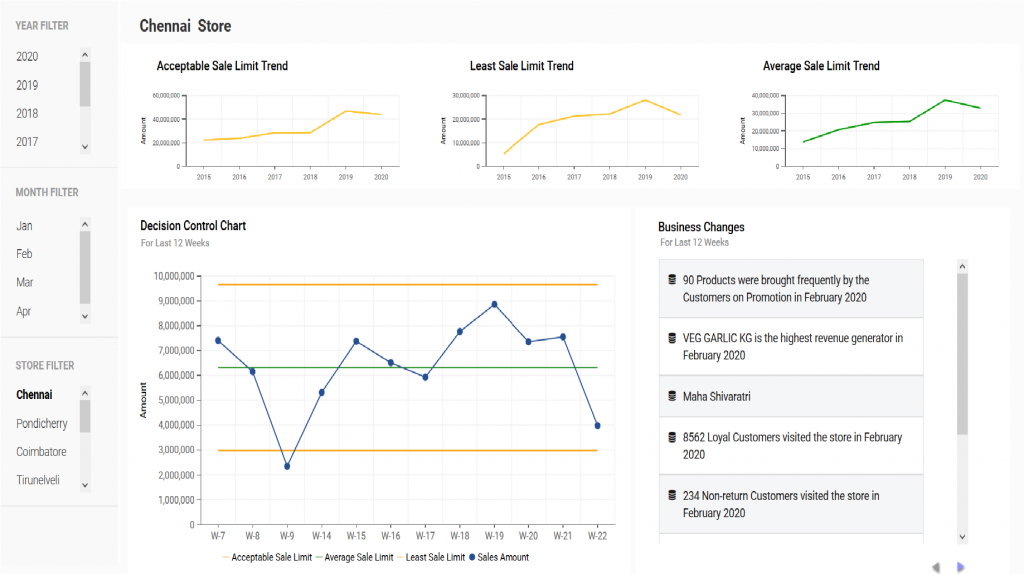Obtaining Consistent Sales using Sales Process Control

Introduction
SPC – Sales Process Control, is a methodology which is built on the foundation similar to the more popular Statistical Process Control method. The only difference being here is that the technique is modified and built to determine consistency in sales for an organization. This methodology can be used across Retail Verticals to find consistency in sales, some of the benefits of this process are;
- Obtain Key Focus Areas across multiple Departments.
- Assisted Decision Making.
- Maximize Revenue.
- Minimize Costs.
Sales Consistency using SPC
Having a consistent sale through a dedicated process is important as it can greatly improve sales performance and also makes things easier to achieve results quickly.
The SPC is that process which can provide consistency, allowing decision makers to quickly diagnose where the problems are and recommend changes which can help in boosting sales or mitigate the negative effects of poor sales.
Let’s take an example of a Retail Analytics solution which uses this SPC process to aid the decision makers make things easier. The solution was built using Pentaho Plus with Data Science Models integrated using Python and R.

The above image is a snapshot of the dashboard, which has the SPC process integrated by the name of ‘Decision Control Chart’, as can be noted, the chart has three trend-lines/threshold which determines the sales performance during the said period. The three trend-lines/threshold are namely;
- Acceptable Sale Limit
- Lower Sale Limit
- Average Sale Limit
Any sales which is within these trend-lines/thresholds, actually determines that the sales performance is consistent and optimal, if the sales value is lower than the average/lower sale limit, then the sales performance is being impacted and the sales are not consistent.
The ‘Decision Control Chart’ in short aids as a tool to effectively monitor for sales performance. The Value of these Sale Limits are obtained using Statistical Techniques specific to the business needs.

The ‘Business Change’ table is coupled along with the ‘Decision Control Chart’, the aim of this table if to provide the decision makers with quick glance of insights which have occurred during the month in order to effectively make better decisions. Some of the insights which are being offered are;
- Customer Visits Information (Loyal/First-Timers)
- Products Information (High Sold/High Revenue)
- New Products added to the Store
The above-mentioned insights are some of the many which are offered to the decision makers to assist them in making better decisions, also, an option to add user-specific decisions are also provided. All these insights along with the SPC process serves the purpose of providing a consistent sale.
Conclusion
The SPC process aids in providing that consistency in sales and help the decision makers make more informed decision about what they are selling and have a greater consistency in terms of selling behavior across the organization.
